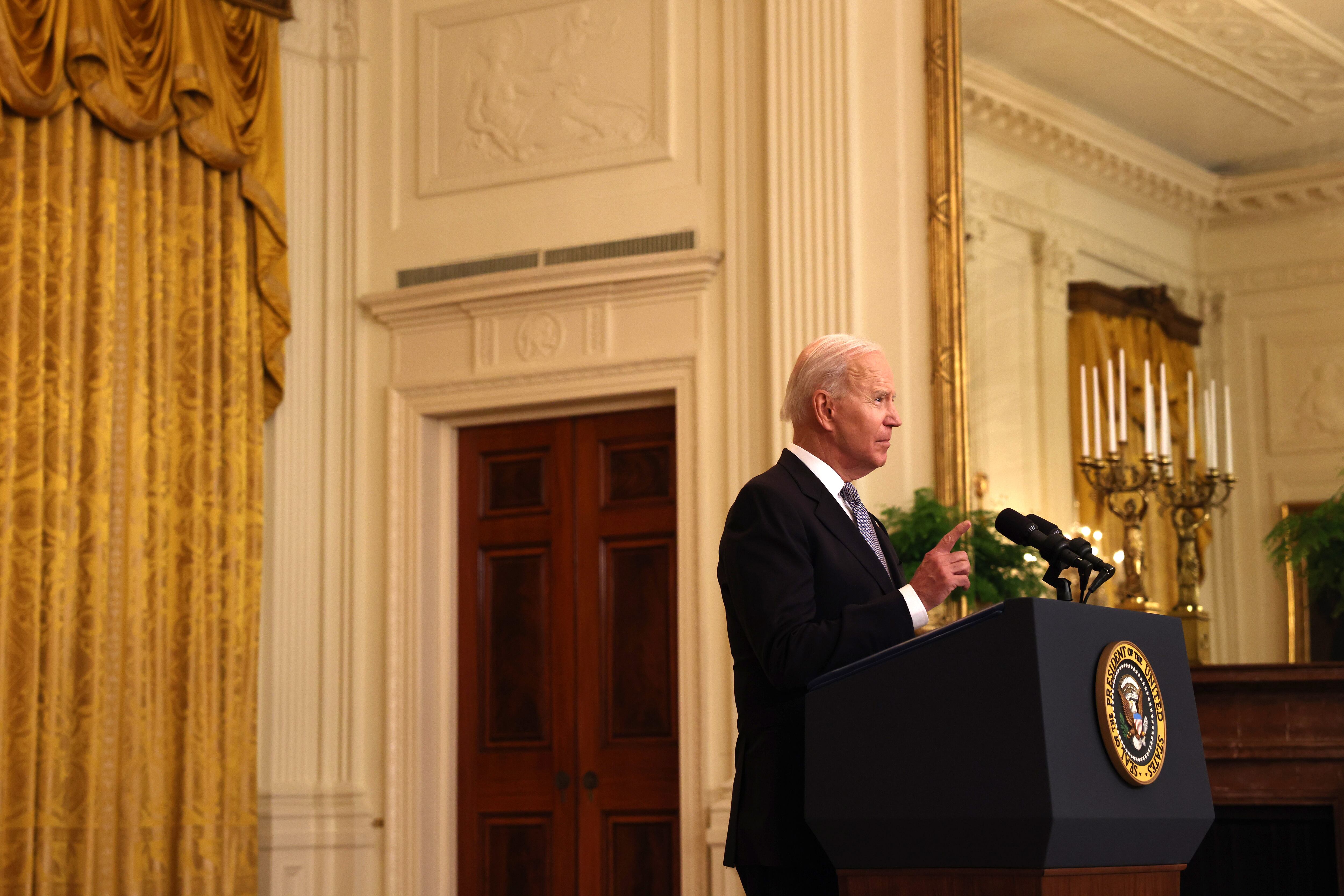It was already noteworthy that President Joe Biden proposed more than doubling money for Title I, the centerpiece of the federal government’s efforts to help low-income students and the schools they attend.
Then, the White House released its budget proposal showcasing its full ambitions: not simply adding to Title I, but creating a new $20 billion Title I-like program that would also push states to more equitably fund their own schools.
It amounts to a higher-risk, higher-reward gambit for the Biden administration, which is hoping that the increase in federal money can address funding inequities that have persisted in American schools.
“There’s a lot of potential, both in this budget and in the several years ahead of thinking about how to make it a reality,” said Ary Amerikaner of the Education Trust, a civil rights group backing Biden’s approach.
There are significant challenges ahead for this plan, though. By creating a new program, and eventually tying money to politically tricky, state-level changes, some experts worry that the Biden administration has bitten off more than it can chew. Adding to the uncertainty: the White House has not fully explained how its proposal would work.
“This is really hard,” said Nora Gordon, a Georgetown University professor who has studied Title I. “But just giving out money to poorer states is not hard.”
Here are the biggest questions facing the Biden administration’s new education program — and what we know so far.
How would these billions be divvied up?
We don’t know yet. Budget documents indicate that the Biden administration wants to use a new, “even more targeted formula that advances equity to the greatest extent possible.” That likely means the money will head to schools serving the greatest concentrations of children from low-income families, but there are no specifics yet.
“The formula itself is something we are working with Congress on, so it is not yet a final proposal,” Department of Education senior advisor Donna Harris-Aikens said last week.
The existing Title I program sends money to high-poverty school districts through a complicated patchwork of rules. That formula includes some quirks — it favors smaller states, for instance.
It’s possible that a new formula could eliminate those inconsistencies, meaning the money would be more simply tied to poverty rates.
It’s also possible that politics could push it in other directions, though. Elected officials will want to ensure that schools in their area don’t lose out on new funds. And after most of the federal stimulus money for schools was divvied up using Title I, it came under fire for being too heavily tilted toward high-poverty districts, with some advocates for wealthier districts even describing the result as “inequitable.”
“Any time you open a formula, it could go the way you want it to or it can go a different way,” said Amerikaner.
Still, if the program becomes reality, no state or district would lose money. Existing Title I funds (some $16.5 billion) would continue to flow in the same way. It’s only new money that would use a new formula, which could assuage some of the political concerns.
Will federal money push states to overhaul their own approach to funding?
This will depend on a number of unknowns.
Here’s how the Department of Education explains the plan: To get some of the new funding, states would have to set goals for improving the adequacy (amount) and equity (fairness) of their funding systems. They could create voluntary state-level “equity commissions,” also with new federal money, to help. Then, states would have to show progress in order to get “future increases in funding” under the new program.
It’s not clear how tempting of a carrot this will be for states, though, since those future increases could be relatively small. In other words, some states might be willing to say no to their share of these new funds if the project becomes a heavy political lift.
“I really worry that the incentives don’t incentivize, and then they just really penalize the kids where you’re in a state that is already not doing what it should be doing to help poor kids,” said Gordon.
Another reality: Many of the inequities that the Biden administration wants to fix exist between poor and wealthy states — say, Mississippi and Massachusetts — rather than within the same state. Even if it works, this program won’t necessarily change that.
Is this idea likely to get through Congress?
It’s Congress who writes and approves the budget, and it’s not clear how amenable lawmakers will be to this proposal.
Simply increasing Title I does seem to have strong support among Democrats, who narrowly control Congress, and among public education interest groups. Biden’s budget request last week was greeted by a bevy of positive statements.
But reception to the other aspects of the plan — the new program, a different formula, and the incentives for states to make changes — has been muted.
There are certainly some advocates of the Biden administration’s proposal. A handful of progressive think tanks and civil rights groups, including the Learning Policy Institute and the Education Trust, signed onto a letter in favor of the idea last month.
But many other leading advocacy groups — most notably, many employee associations and teachers unions — have been mum. Some of this reluctance might reflect uneasiness about the federal government directing local education decisions, particularly after the controversy that accompanied the Obama-era Race to the Top program.
A House Democratic aide also previously cast doubt overhauling the Title I funding formula or tying new money to incentives. The Biden administration has already seen one competitive grant program scrapped by Congress over concerns that it was too similar to Race to the Top.
“It’s not something that we’re going to wholeheartedly endorse,” said Noelle Ellerson Ng, advocacy director of AASA, the school superintendents association, referring to the incentives for states. Her group is instead pushing lawmakers to improve the Title I formula. “Get your own house in order before you go out telling the states what to do.”







